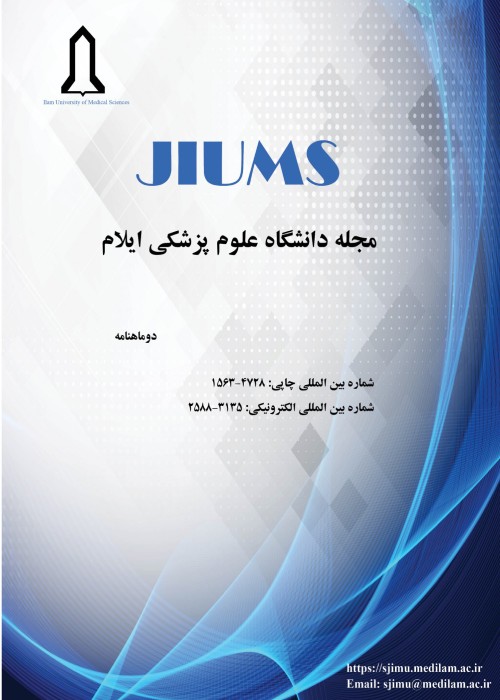Survey of the Antibacterial Properties of Aqueous Ethanolic and Methanolic Extraction of Artemisia Annua Around the City of Babol
Author(s):
Abstract:
Introduction
Bacterial resistance to antibiotics and adverse effects of food preservatives and additives are common problems of health and therapeutic systems that solve the problem and controlling them necessitate achieving a new group of antimicrobial compounds. In this regard, compounds derived from plant extracts as potential sources are of great importance.Materials and Methods
The study has been carried out in two different stages including extracting and determining anti-bacterial properties of aqueous, ethanolic and methanolic extractions against four strains of bacteria including Escherichia coli, Enterococcus faecalis, Staphylococcus aureus and Streptococcus mutans. Disk diffusion and also well plate methods and afterwards measuring the diameter of inhibition zones were used as antimicrobial activity indicators. The antimicrobial activity of different extracts concentration was compared versus blank sample and common antibiotics that are used to treat bacterial infections.Findings: All three of aqueous, ethanolic and methanolic extracts of A.A could create significant anti-bacterial properties compared with blank and antibiotic samples. At a concentration of 100 mg/ ml aqueous extract equivalent to 30% of ciprofloxacin but methanol extracts with the greatest impact about 71% of Vancomycin were creating inhibitory activity against Escherichia coli and Enterococcus faecalis respectively. Minimum Inhibitory effect was resulted by aqueous extract against Escherichia coli and Enterococcus faecalis but the inhibitory effects of these extracts were significant in comparison with blank sample (pDiscussion &
Conclusions
Aqueous, ethanolic and methanolic extrtacts of A.A showed varying degrees of anti-bacterial properties that this effect depends on the concentration used. So, probably this inhibitory effect on the bacterial activity is attributable to materials that the adequacy of their extracting depends on used solvent features. It might be achieved to new antimicrobial compounds by identification and extraction of these materials.Keywords:
Language:
Persian
Published:
Ilam University of Medical Science, Volume:23 Issue: 6, 2016
Pages:
129 to 141
magiran.com/p1508673
دانلود و مطالعه متن این مقاله با یکی از روشهای زیر امکان پذیر است:
اشتراک شخصی
با عضویت و پرداخت آنلاین حق اشتراک یکساله به مبلغ 1,390,000ريال میتوانید 70 عنوان مطلب دانلود کنید!
اشتراک سازمانی
به کتابخانه دانشگاه یا محل کار خود پیشنهاد کنید تا اشتراک سازمانی این پایگاه را برای دسترسی نامحدود همه کاربران به متن مطالب تهیه نمایند!
توجه!
- حق عضویت دریافتی صرف حمایت از نشریات عضو و نگهداری، تکمیل و توسعه مگیران میشود.
- پرداخت حق اشتراک و دانلود مقالات اجازه بازنشر آن در سایر رسانههای چاپی و دیجیتال را به کاربر نمیدهد.
In order to view content subscription is required
Personal subscription
Subscribe magiran.com for 70 € euros via PayPal and download 70 articles during a year.
Organization subscription
Please contact us to subscribe your university or library for unlimited access!


